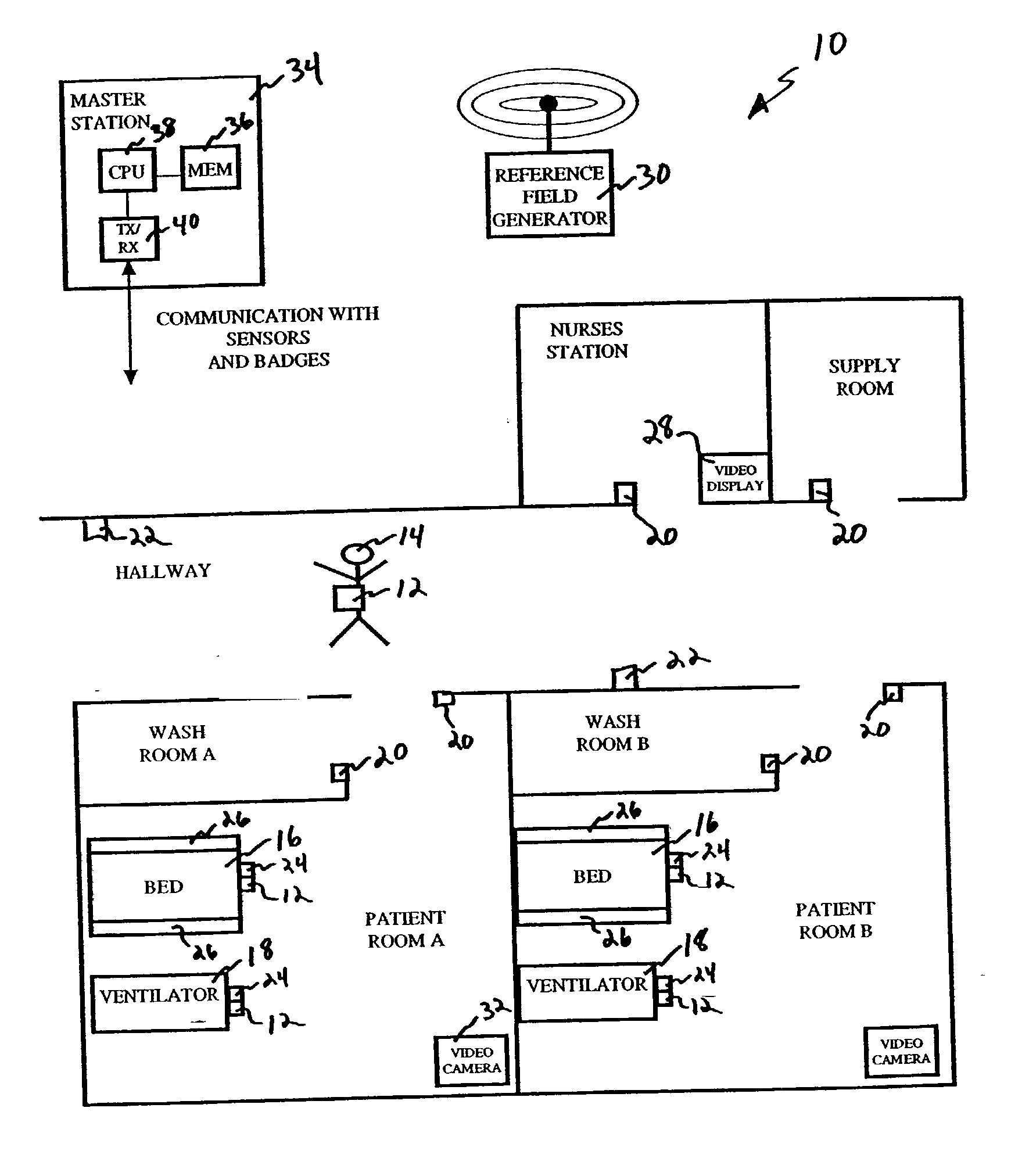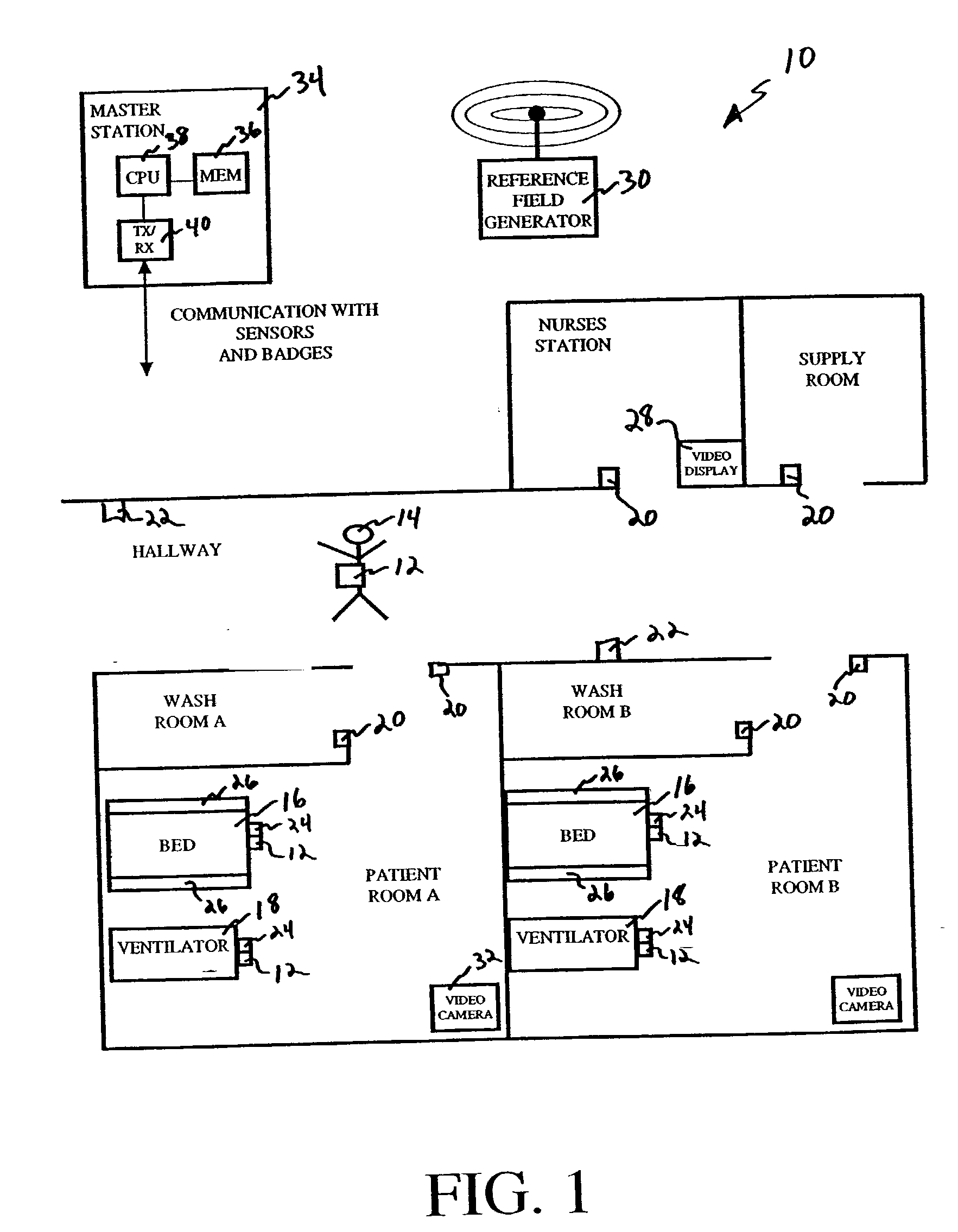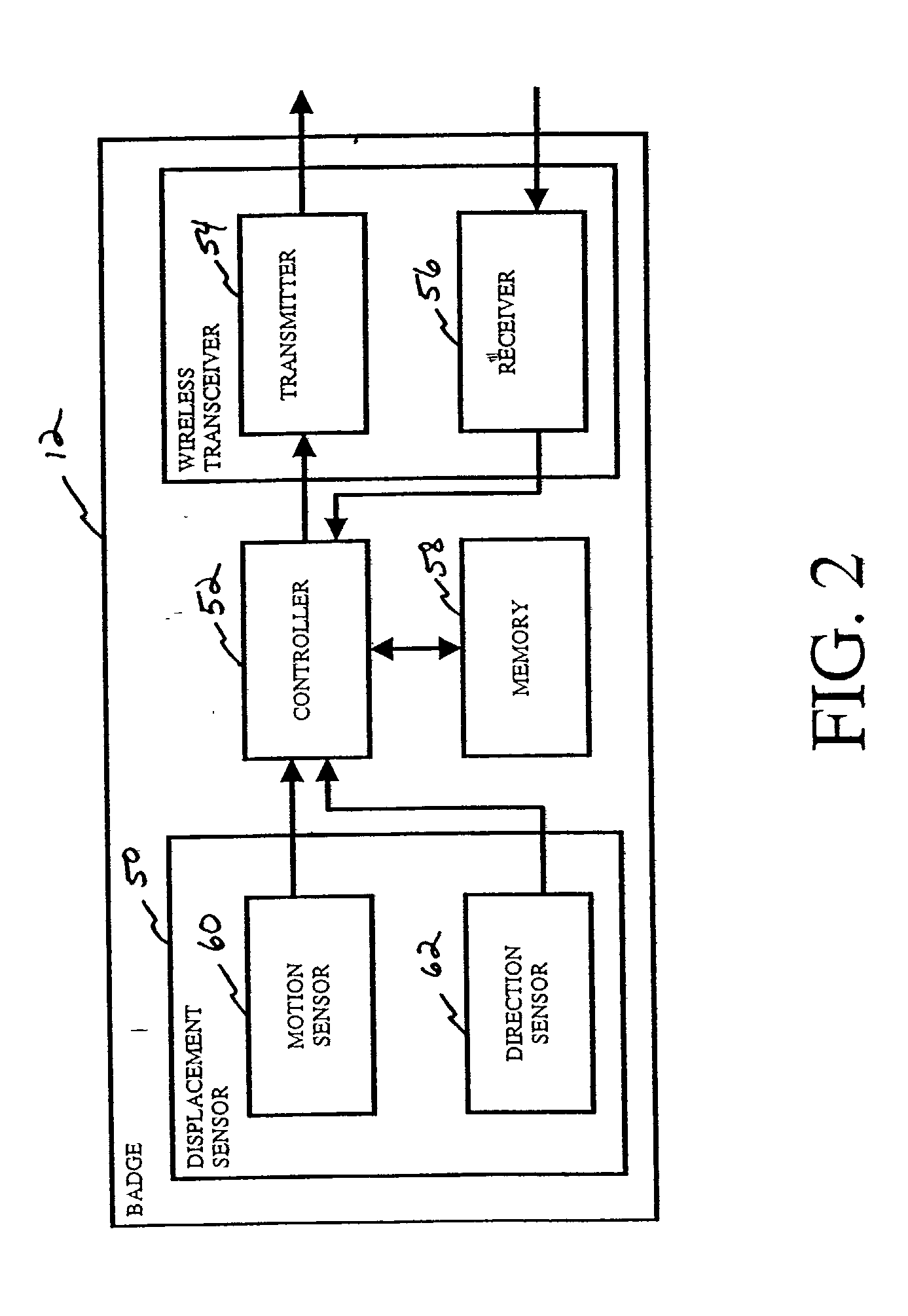Article locating and tracking system
a tracking system and article technology, applied in the field of article tracking and tracking systems, can solve the problems of high stress, low patient satisfaction, and low caregiver (e.g., nurse) to patient ratio, and achieve the effects of high stress, high pressure, and long hours
- Summary
- Abstract
- Description
- Claims
- Application Information
AI Technical Summary
Benefits of technology
Problems solved by technology
Method used
Image
Examples
Embodiment Construction
[0020] While the invention is susceptible to various modifications and alternative forms, exemplary embodiments thereof have been shown by way of example in the drawings and will herein be described in detail. It should be understood, however, that there is no intent to limit the invention to the particular forms disclosed, but on the contrary, the intention is to cover all modifications, equivalents, and alternatives falling within the spirit and scope of the invention as defined by the appended claims.
[0021] FIG. 1 illustrates an exemplary activity based tracking (ABT) system 10 which incorporates various features of the present invention therein. In general, the ABT system 10 is operable to monitor activities and cause execution of actions in response to various activities. The exemplary ABT system 10 includes badges 12 used to tag persons 14 and equipment such as beds 16 and ventilators 18. As further described below, badges 12 may include passive RFID, active RF, or active IR t...
PUM
 Login to View More
Login to View More Abstract
Description
Claims
Application Information
 Login to View More
Login to View More - R&D
- Intellectual Property
- Life Sciences
- Materials
- Tech Scout
- Unparalleled Data Quality
- Higher Quality Content
- 60% Fewer Hallucinations
Browse by: Latest US Patents, China's latest patents, Technical Efficacy Thesaurus, Application Domain, Technology Topic, Popular Technical Reports.
© 2025 PatSnap. All rights reserved.Legal|Privacy policy|Modern Slavery Act Transparency Statement|Sitemap|About US| Contact US: help@patsnap.com



